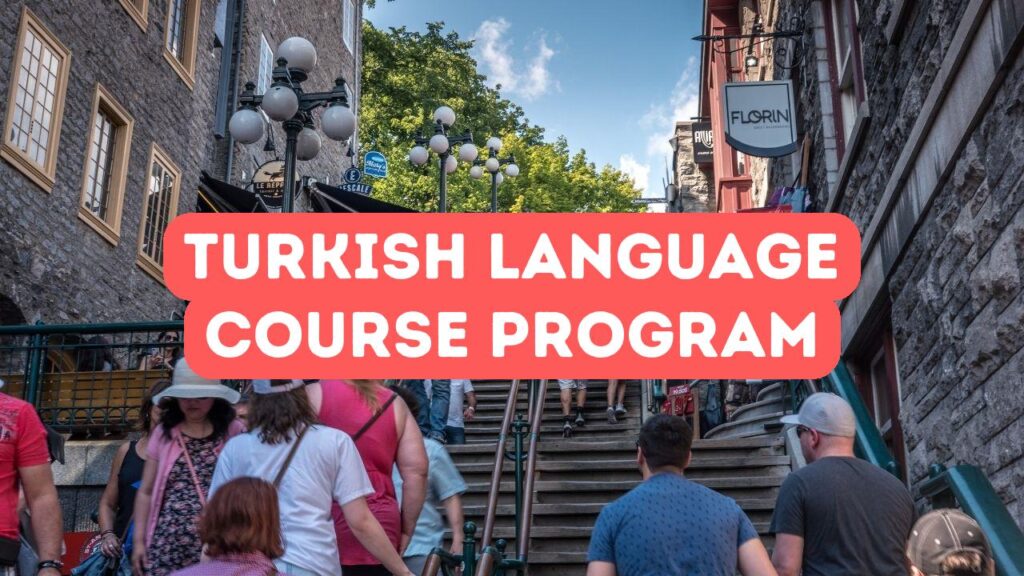Learning a new language always seems daunting, and Turkish is no exception. Buzzing with myths, learning Turkish might appear like an uphill battle. But let’s clear the air. Are learning Turkish myths stopping you from diving into this rich language? It’s time to set the record straight. Turkish language facts can surprise you; it’s not as intimidating as it appears. Debunking Turkish myths is our mission today. From complexity to the alphabet, misconceptions are rife. But believe it or not, you can learn Turkish easily with the right approach. While it’s true some aspects may be novel, aren’t challenges what make learning fun? Let’s tackle those Turkish language misconceptions frequently heard around the globe. Remember, understanding these myths is your first step toward fluency. The road might be winding, but Turkish is a language worth exploring. Let’s debunk these myths to get you started on your Turkish journey!
Unraveling the Truth: Common Misconceptions About Turkish Language Acquisition
Turkish may seem perplexing, but let’s peel back the curtain on some pervasive Turkish language misconceptions frequently encountered. First, many believe Turkish is riddled with complex grammar rules. Contrary to popular belief, its structure is surprisingly logical. Turkish grammar mirrors a pattern where each rule builds on the next, much like stacking blocks, which makes it easier once you grasp the basics. Another myth stems from the alphabet switch. Yes, Turkey transitioned to a Latin alphabet in the 1920s, which means you don’t have to wrestle with unfamiliar letters. Instead, Turkish language facts reveal a straightforward alphabet system— a boon for many language learners. By debunking Turkish myths, you’re empowered to learn Turkish easily, without the baggage of false assumptions. So, don’t let learning Turkish myths cloud your journey. With the right mindset, the language is within your reach.
Peering into the past, many assume learning Turkish myths revolve around daunting vocabulary. However, Turkish language facts unveil a consistent and phonetic word system, making it a rhythmic dance of sounds. Interestingly, some assume Turkish is only spoken in Turkey, missing its wider use in Cyprus, parts of Europe, and even the U.S. Debunking Turkish myths shows it has a surprising reach. Another Turkish language misconception frequently discussed is that it demands years for fluency. The truth? With dedication and effective methods, you can learn Turkish easily in less time than you might expect. Don’t allow rumors of endless vocabulary lists hold you back. Each word reveals a piece of the cultural mosaic. Embrace this unique experience by discarding these misconceptions. The Turkish language is waiting to embrace you, with open arms and a melody that lingers in the mind like a beloved song.
Imagine diving into the melodious world of Turkish. Yet, many shy away due to the myth it’s exceptionally hard to pronounce. Learning Turkish myths can indeed paint a daunting picture. But, Turkish language facts highlight a phonetic ease, where words sound exactly as they’re written. Isn’t that a relief? Another assumption is about its isolation from other languages. In reality, Turkish shares vocabulary with French, Persian, and Arabic! Debunking Turkish myths uncovers an enriched linguistic tapestry, making it simpler to grasp connections. Interestingly, some might say a tutor is a necessity. However, modern technology offers apps and courses at your fingertips, letting you learn Turkish easily and affordably. So, strip away these Turkish language misconceptions frequently encountered. Let the truth carve a path toward fluency, one where challenges become stepping stones, and myths dissolve into air. Turkish isn’t as intimidating as rumored; it’s an adventure awaiting your discovery.
The Real Benefits of Learning Turkish: What You Should Know
Unraveling learning Turkish myths reveals the profound benefits that come with grasping this unique language. Firstly, imagine engaging with over 75 million native speakers. That’s a ticket to a broader cultural world, no longer just Turkish language facts but experiences straight from the source. Plus, Turkish is part of a vast language family, stretching into various linguistic landscapes. Now, picture Turkish doors unlocking access to diverse markets and opportunities. Debunking Turkish myths also means acknowledging its practical side. Sure, there’s intricacy, but isn’t that what keeps the grey matter agile? Not to mention, when you learn Turkish easily, you’re embracing a language rich in history and innovation. Navigating through the Turkish language misconceptions frequently ensures you see not obstacles, but stepping stones towards enriched communication and business potential. Why miss out on a treasure trove of cultural wonders? That’s the real essence of diving into Turkish fluency.
In the realm of Turkish language facts, the alphabet is often misunderstood. Unlike common belief, it’s not a sprawling monster to conquer. Turkish utilizes a Latin-based alphabet that’s straightforward and learner-friendly. This isn’t the complex script some portray it to be. So, debunking Turkish myths involves embracing this clarity. It’s akin to finding a hidden shortcut in a dense forest. Once you start, the path becomes less labyrinthine and more of an open trail. Turkish language misconceptions frequently lead learners astray, turning familiarity into fear. But why let these myths cloud your vision? Conquering the basics can happen surprisingly quickly. With each small victory, the desire to learn Turkish easily gains momentum. So, cast aside those shadows of doubt and discover that learning Turkish is more approachable than it seems. The real benefit lies in knowing the truth behind these tales—the foundation of a rewarding language journey.
Understanding the real benefits of learning Turkish starts by shrugging off those pesky learning Turkish myths. Imagine stepping into the shoes of a Turkish speaker, tasting traditional dishes, sharing stories, and building friendships. The fabric of Turkish culture is rich and inviting. Dive deeper, and you’ll find that language is the golden thread weaving it together. Those pesky Turkish language misconceptions frequently create a cloud where there should be curiosity. Debunking Turkish myths makes you part of something bigger—a vibrant tapestry of customs and history. The truth is, as you learn Turkish easily, you also carve a path toward expansive cultural appreciation. Consider the language a key that unlocks various personal adventures, from wandering the Grand Bazaar to reading Orhan Pamuk in his native tongue. It’s this connection to the world that enriches the soul, proving that the rewards of learning Turkish stretch far beyond vocabulary and grammar.
Strategies to Overcome Challenges in Learning Turkish Effectively
Facing obstacles is natural when beginning your Turkish language journey. However, by focusing on specific strategies, you can turn these challenges into stepping stones. One approach is to immerse yourself in Turkish culture—watch movies, listen to music, and enjoy podcasts. This exposure aids in natural language acquisition, offering Turkish language facts rather than just theory. Another powerful tool is consistent practice. Like a river carving its path through rock, regular engagement helps overcome Turkish language misconceptions frequently believed to hinder progress. Don’t forget, a friendly community of learners can make a difference. Join online forums or language exchange programs for shared experiences. It’s easier to learn Turkish easily when you debunk learning Turkish myths and approach the language with curiosity and enthusiasm. Decoding these challenges not only broadens your linguistic skill set but also enriches your understanding of a culture vibrant with history and tradition.
Why do myths like “Turkish is impossibly hard” persist in discourse? These Turkish language misconceptions frequently deter learners. But debunking Turkish myths starts with small, strategic steps. Break it down: tackle one verb pattern, one noun case at a time. Celebrate small victories—each word you master is a brick in your growing language foundation. Did you know Turkish language facts include a straightforward syntax? It’s akin to piecing a puzzle together. Regular touchpoints, even brief sessions, cement these parts in memory. Ever considered the power of storytelling in language learning? Craft your own sentences in Turkish, no matter how simple. You’ll find patterns revealing themselves, the rhythm of the language becoming familiar. Embrace mistakes—they signal progress. In this journey, persistence is your best ally. It’s key to learn Turkish easily, turning what was once a perceived mountain into manageable, rewarding terrain.
Harnessing the power of strategic learning methods is crucial for overcoming challenges in mastering Turkish. Start by setting achievable goals—break down what seems daunting into digestible tasks. Employ visual aids like flashcards or apps to reinforce Turkish language facts you’ve learned. Consider finding a language buddy; swapping stories and experiences not only make learning engaging, but also sheds light on debunking Turkish myths. With this collaboration, tapping into shared knowledge becomes natural. Explore language through daily life—labeling household items in Turkish can reinforce vocabulary organically, contrary to Turkish language misconceptions frequently encountered. This practical approach ensures you learn Turkish easily, integrating it into daily routines. Leverage technology to your benefit; apps and online platforms offer interactive lessons, making self-paced learning a possibility. Recognize your progress, no matter how minor—it fosters motivation. With persistence, you’re crafting a bridge over what was once thought an insurmountable gap.







